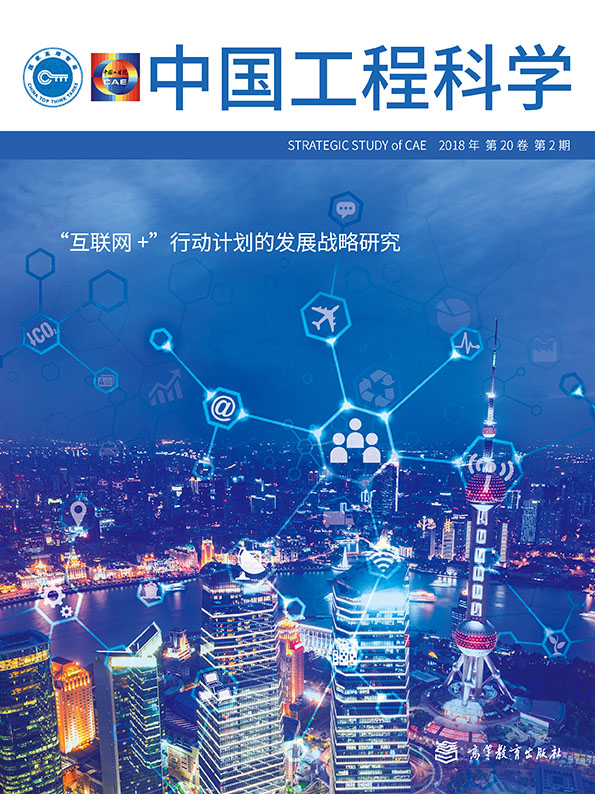《1 Introduction》
1 Introduction
In the new round of global technological revolutions and industrial changes, the integration of the Internet and various fields has wide prospects and unlimited potential. It has become an irresistible modern trend and has a strategic and overall impact on the economic and social development of various countries. The State Council issued the Guidance of the State Council on Actively Promoting the “Internet Plus” Action on July 4, 2015, and the Ministry of Ecology and Environment issued the General Plan for the Construction of Ecological Environment Big Data on March 8, 2016. Both these acts indicate that information technologies such as “big data” and “Internet Plus” have become important means for promoting the modernization of environmental governance systems and capabilities.
Under such an era background, it is an objective requirement and rational choice for China’s environmental information development to further promote the construction of “Internet Plus” smart environmental protection, which has become an inevitable trend in the development of environmental information [1]. However, China has not yet formed a suitable “Internet Plus” smart environmental protection assessment index system using which the environmental information construction investment (cost) and production efficiency (output and benefit) can be evaluated objectively, fairly, and accurately. Therefore, this study develops an assessment index system based on the analysis of the definition and connotation of “Internet Plus” smart environmental protection. This evaluation index guides the orderly construction of “Internet Plus” smart environmental protection with a more scientific and instructive evaluation model to further promote the development of environmental information.
《2 Definition and connotation of “Internet Plus” smart environmental protection 》
2 Definition and connotation of “Internet Plus” smart environmental protection
“Internet Plus” can be simply interpreted as “connecting everything, interconnecting everything” [2] and is considered an “information energy source” tied with electric energy [3]. It integrates the innovation achievements of the Internet with various sectors of the economy and society; promotes technological advancement, efficiency improvement, and organizational change; facilitates innovation and enhances productivity of the real economy; and forms a wider range of new economic and social developments with the Internet as the infrastructure and innovation element.
Owing to the development of the concept of “Smart Earth,” followed by that of “smart environmental protection,” people are paying more attention to the application of new technologies in the field of environmental protection [4]. There are multiple versions of the definition of smart environmental protection, but their connotations are basically the same. The most representative one is the definition proposed in the book The Construction and Practice of Smart Environmental Protection System: “Smart environmental protection is based on the digital environment protection. Using the technology of the Internet of Things to embed sensors and equipment into various environmental monitoring objects, it integrates the Internet of Things in the environmental protection field through supercomputers and cloud computing, and realizes human social and environmental services. The integration of the system realizes the wisdom of environmental management and decision making in a more refined and dynamic way” [5].
Owing to the continuous deepening of the environmental governance system reform, the combination of the Internet and environmental protection can be used to completely regulate the resources and power of the government, enterprises, and public, and realize a collaborative and innovative environment governance. This study defines “smart environmental protection” as follows: “smart environmental protection” is the extension and expansion of the concept of “digital environmental protection” [6]. It adopts new IT technologies such as “Internet,” “cloud computing,” “big data,” and “the Internet of Things,” and promotes the opening and sharing of pollution source supervision data, environmental quality monitoring data, environmental governance data, and environmental industrial data to form a closedloop source control, process supervision, comprehensive governance, and people-to-governance environmental management on the basis of the construction of a full-time spatial network for environmental monitoring. Thereafter, it achieves a comprehensive eco-environmental decision-making, precise supervision, and convenient public service, and helps improve environmental quality, prevent environmental risks, and provide people with better ecological products.
Specifically, “Internet Plus” smart environmental protection comprises the environmental protection data resource center layer, perception/access/communications transmission layer, cloud service platform layer, and cloud service application layer (Fig. 1). It has the following characteristics:
《Fig. 1》

Fig. 1 Architecture of “Internet Plus” smart environmental protection system.
(1) “Accurately measured” intelligent and diverse environment perception. It achieves “more thorough perception” of environmental factors such as environmental quality, pollution sources, ecology, and radiation using sensors, multi-hop self-organizing sensor networks, and any device, system, or process that can sense, measure, capture, and transfer information anytime, anywhere. Perception layer construction technologies mainly include data acquisition and processing technologies and deployment of sensors, self-organizing networking and collaboration, represented by sensors’ acquisition sensing technology, RFID technology, satellite remote sensing technology, global positioning system, geographic information system, and wireless sensor network technology.
(2) “Speedy” high-speed network transmission. It exchanges and shares environmental information stored in individuals, companies, community organizations, and environmental monitoring and management information systems to achieve a “more comprehensive interconnection and interoperability” using environmental protection networks, e-government networks, satellite communication networks, the Internet, and mobile Internet.
(3) “Done out” intelligence information processing. It integrates and analyzes multi-dimensional massive cross-regional and cross-industry environmental information with technologies such as cloud computing, virtualization, and high-performance computing to realize massive data storage, real-time processing, in-depth mining and model analysis, and then achieves “deeper intelligence.” Information processing includes data cleaning, analysis, mining, and visualization, and is represented by technologies such as data statistics, assimilation, fusion, mining and analysis of environmental models.
(4) “Good management” intelligent management decision-making and information services. It provides a “more intelligent management and decision support” through business application software, environmental data products, environmental consulting services, and technical services. Specifically, it provides system support for environmental protection business application and management decision-making in areas such as environmental quality, pollution sources, ecological protection, nuclear and radiation management; provides information services for the development of third-party governance and environmental protection industries; provides information channels for the public to understand environmental information; and participates in environmental protection.
《3 Design method and principle of “Internet Plus” smart environmental protection evaluation index system》
3 Design method and principle of “Internet Plus” smart environmental protection evaluation index system
《3.1 Design philosophy》
3.1 Design philosophy
The establishment of a scientific and reasonable evaluation index system must take the evaluation objective as the starting point and the end result. Therefore, the decomposition of the goals and characteristics of “Internet Plus” smart environmental protection is the most important issue. To this end, we present the following as the design philosophy of the entire index system.
First, we conduct research on documents related to the construction of “Internet Plus” smart environmental protection, and collect and sort out relevant information. The “Internet Plus” smart environmental protection evaluation index system is still a new research field, and thus, there is a lack of direct reference to the literature. Hence, this study selects the smart city, e-government performance evaluation index system construction process for reference.
Second, we select the indicators used in the “Internet Plus” smart environmental protection construction from the data collected. Because there are many aspects involved, under the constraints of time and cost factors, the elements that can best reflect the fundamental characteristics of “Internet Plus” smart environmental protection are selected as the representative indicators from the assessment content and assessment indicators.
Finally, the indicators are stratified and summarized at all levels, and a basic structure of the “Internet Plus” smart environmental protection evaluation index system is established.
The specific design philosophy of the “Internet Plus” smart environmental protection evaluation index system is shown in Fig. 2.
《Fig. 2》

Fig. 2 Design philosophy of “Internet Plus” smart environmental protection evaluation index system
《3.2 Design principles》
3.2 Design principles
The design process of the “Internet Plus” smart environmental protection evaluation index system follows the principles of representativeness, independence, comprehensibility, collectability, and scalability.
3.2.1 Representativeness
The construction of “Internet Plus” smart environmental protection is a systematic project that covers a wide range of contents, covering all aspects of environmental protection and environmental information. In the process of selection, evaluation indicators need to reflect the overall level of smart environmental protection construction development and must not cross or overlap the referenced contents. Therefore, the evaluation indicators must be representative.
3.2.2 Independence
Independence indicates that the index with a large correlation in the evaluation index system only retains one, avoiding redundant indicators and making them independent.
3.2.3 Comprehensibility
Comprehensibility indicates that the indicators involved in the evaluation index system are clear and easy to understand, and thus, can avoid ambiguity during use.
3.2.4 Collectability
Collectability indicates that the historical and current data involved in the evaluation index system can be collected through monitoring data, formula calculations, and expert assessments so that the final results can be calculated, evaluated, and compared.
3.2.5 Scalability
Owing to the development of new information technologies such as “Internet of Things,” “cloud computing,” “big data,” and “mobile Internet,”—the definition, overall framework, and target content of “Internet Plus” smart environmental protection are also being constantly updated. The contents that need to be covered during the evaluation of “Internet Plus” smart environmental protection construction will continue to change, so the evaluation indicators need to be able to be increased, decreased, and modified according to the actual development of “Internet Plus” smart environmental protection.
《3.3 Design methods》
3.3 Design methods
In the process of designing the “Internet Plus” smart environmental protection evaluation index system, the three methods of factor analysis, literature survey, and expert consultation are comprehensively used.
3.3.1 Factor analysis
Starting from the investment, process, and production efficiency of “Internet Plus” smart environmental protection construction, we analyze the resource investment, integration application level, collaborative innovation, and economic and social benefits of “Internet Plus” smart environmental protection; comprehensively evaluate “Internet Plus” smart environmental protection construction; and then determine the overall framework of the evaluation index system.
3.3.2 Literature survey
Based on the overall framework of the evaluation index system, we conduct literature and policy research on the smart city evaluation index system, e-government performance evaluation index system, environmental information construction guideline, and the assessment of the ecological environment for each dimension or element. Thereafter, we extract relevant indicators involving smart environmental protection to clarify the sources of indicators and reduce disputes.
3.3.3 Expert consultation
In the process of constructing the “Internet Plus” smart environmental protection evaluation index system, some of the evaluation indicators belong to comprehensive indicators (such as environmental supervision and law enforcement capacity building standards, environmental emergency disposal capacity building standards, macro decision-making ability building standards, and environmental public opinion monitoring and policy guidance standards). They need to periodically consult experts in related fields, and comprehensively assess and evaluate the evaluation index system in combination with expert experience and subjective judgments.
《4 “Internet Plus” smart environmental protection evaluation index system construction》
4 “Internet Plus” smart environmental protection evaluation index system construction
《4.1 The construct philosophy of index system 》
4.1 The construct philosophy of index system
The “Internet Plus” smart environmental protection assessment is based on three aspects: input, process, and production efficiency. It is built using four dimensions: resource input capacity, fusion application level, collaborative innovation capability, and economic and social benefits. Among them, resource input capacity is associated with input, fusion application level and collaborative innovation capability with process, and economic and social benefits with production efficiency.
4.1.1 Resource input capacity
The resource input capacity will focus on assessing the basic conditions for “Internet Plus” smart environmental protection implementation and will primarily measure the level and capabilities of related inputs, facilities, security, and information applications. The resource input capacity comprises four elements: factor input, platform construction, data resources, and security protection.
4.1.2 Fusion application level
The focus of fusion application level is on assessing the online and offline interactions of the environmental protection department, the smart application, and user experience of environmental protection department. It mainly measures the level and ability of the environmental protection department to carry out Internet interaction, environmental protection business information application, and user participation. The fusion application level comprises three elements: Internetization of facilities and products, intelligent applications, and user participation.
4.1.3 Collaborative innovation capabilities
The collaborative innovation capability focuses on assessing environmental protection business collaboration and environmental regulatory model innovation of environmental protection departments in different areas both internally and externally. It mainly measures the level and ability of environmental protection departments to conduct internal business collaboration, external business collaboration, and model innovation using the Internet. The collaborative innovation capability comprises three elements: external resource utilization, industrial chain integration, and model innovation.
4.1.4 Economic and social benefits
The economic and social benefits focus on assessing changes in the use of the Internet to improve management, decision making, and economic and social benefits of environmental protection agencies and companies. It mainly measures the impact on the efficiency and performance of “Internet Plus” smart environmental protection implementation. The economic and social benefits comprise four elements: policy environment, competitiveness, economic benefits, and social value.
In this study, the “Internet Plus” smart environmental protection evaluation indicator system includes the target layer, dimension layer, factor layer, and indicator layer (Fig. 3).
《Fig. 3》

Fig. 3 Construct philosophy of “Internet Plus” smart environmental protection evaluation index system
《4.2 Basis of index system》
4.2 Basis of index system
The indicators proposed in the “Internet Plus” smart environmental protection evaluation index system are selected from relevant policy documents and literature as far as possible to avoid disputes. However, there are still some indexes that are rarely mentioned in the documents and literature because of the continuous expansion of content and the continuous advancement of technology, so they are proposed as summarized.
The relevant policy documents and literature cited in the “Internet Plus” smart environmental protection evaluation system are shown in Table 1.
《Table 1》
Table 1. Basis of the index system.

《Table 1. (Continued)》
Table 1. (Continued)

《4.3 “Internet Plus” smart environmental protection evaluation index system》
4.3 “Internet Plus” smart environmental protection evaluation index system
Based on the analysis of the overall structure and the target connotation of “Internet Plus” smart environmental protection; following the principles of representativeness, independence, comprehensibility, collectability, and extensibility; using factor analysis, literature research, and expert consultation, an assessment index system (Table 2) including 4 dimensions, 14 factors, and 64 indexes is formed after researching relevant policy documents and literature on smart city, e-government performance evaluation, the environmental information construction guide, and assessment of ecological environment, and consideration of several expert advice and demonstration.
《Table 2》
Table 2. “Internet Plus” smart environmental protection evaluation index system

《Table 2. (Continued)》
Table 2. (Continued)

《5. Conclusions》
5. Conclusions
The establishment of the “Internet Plus” smart environmental protection system will vigorously promote optimal allocation of innovative resources and elements such as environmental protection personnel, technology, data, and products in China; trigger a continuous reform of the eco-environmental supervision system; and promote the healthy development of China’s environmental protection undertakings, thus facilitating the construction of a beautiful China.
This research is based on the “Internet Plus” smart environmental protection strategic research project, which aims to promote the smart environmental protection system establishment for the Ministry of Environmental Protection and local environmental protection agencies. Based on an analysis of the target, structure, and features of “Internet Plus” smart environmental protection, an assessment index system comprising 4 dimensions, 14 factors, and 64 indexes was formed after a review of the relevant policy documents and literature on smart city, e-government performance, the environmental information construction guide, and technical specifications of the assessment of the ecological environment. The evaluation indicators were selected from three aspects: input, process, and production efficiency, Dimensions Factors Indexes Collaborative innovation capabilities External resource utilization 1. Access situation of environmental protection related external data resources 2. Utilization situation of external infrastructure 3. Utilization situation of external operation and maintenance services Industrial chain integration 1. Information exchange and sharing degree 2. Business collaboration rate 3. Service items coverage Model innovation 1. The innovation ability for environmental management models (organizational changes, innovations of performance management methods, etc.) 2. Environmental information service model innovation capability Economic and social benefits Policy environment 1. Policies and plans related to “internet plus” and smart environmental protection 2. Laws and regulations related to “internet plus” and smart environmental protection 3. Standards related to “internet plus” and smart environmental protection Competitiveness 1. Public satisfaction 2. Work efficiency 3. Completeness of service 4. Accuracy of service guide Economic benefits 1. Profit rate of cost 2. Profit rate of sales 3. Reduction in management costs Social value 1. Major pollutant emission intensity 2. Pollutant emission compliance rate 3. Urban sewage centralized treatment rate 4. Air quality compliance rate 5. Water quality compliance rate 6. Water quality compliance rate of centralized drinking water sources Table 2. (Continued) and the evaluation system had a certain guiding significance for the sound construction and development of smart environmental protection.
The evaluation indicators of this study were mainly based on the relevant policy document requirements. Owing to the eco-environmental supervision system innovation, technological innovation, and national policy reinforcement, the “Internet Plus” smart environmental protection evaluation index system will be further improved. In addition, some of the indicators proposed in this study have not yet been fully quantified, and expert analyses are needed for this purpose. In the future, based on the investigation and analysis of the nationwide smart environmental protection project, this study will further promote the establishment method of an “Internet Plus” smart environmental protection evaluation, increase the practical value of this research, and provide guidance and recommendations for smart environmental protection construction.














 京公网安备 11010502051620号
京公网安备 11010502051620号




